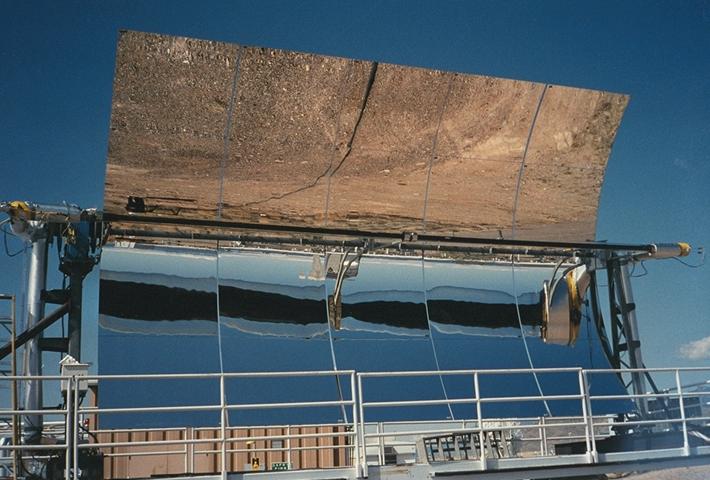Solar Troughs

The reflective surface of a parabolic trough concentrates sunlight
onto a receiver tube located along the trough's focal line. Mechanical
drives slowly rotate the troughs during the day to keep the reflected
sunlight focused onto the pipe receivers. The fluid flowing in the tube
is heated up to approx. 300°C.
The it is transported trough pipes to a heat exchanger to produce steam
that drives a turbine/generator.
The solar trough generators operating today have gas-fired backup
heaters so electricity can be generated during cloudy periods or at night.
Parabolic troughs assembled in collector fields are responsible for almost
all commercially produced solar thermal power. They have an installed capacity
of more than 350 MWe in California representing more than 90% of the world's
installed solar capacity. These plants work during 93% of the time when the
sun is shining, and they produce electricity to meet the needs of 350.000
households. They're also used in prisons, schools, and manufacturing plants.
This technology of solar thermal heating can also be used for heating water,
e.g. in restaurants, small institutional buildings and laundry operations.


Questions, comments, t-shirts, cookies, pizza, milk and honey to:
Mustafa Mesanovic <mm@rhlx01.rz.fht-esslingen.de>
Nils Philippsen <nils@rhlx01.rz.fht-esslingen.de>
Fri Dec 20 10:40:38 MET 1996



